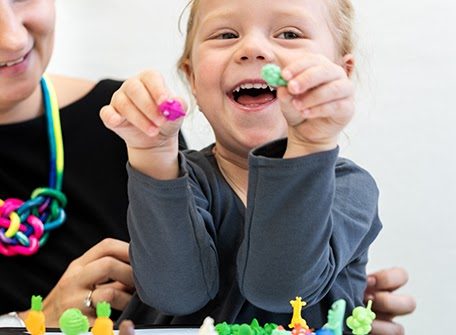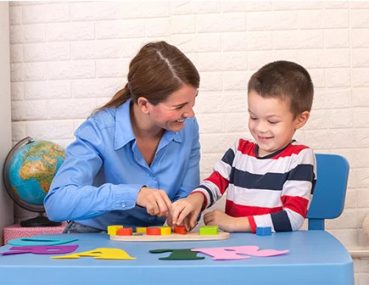This is a question often asked by parents when their children are referred to therapeutic intervention by both therapies.
It might be useful to first look at what are the similarities between Occupational Therapy (OT) and Physiotherapy (PT), as both professions:
- undergo a professional university training whereafter licensing at the local country’s health
- authority takes place
- are considered allied healthcare professionals and are committed to the delivery of appropriate
- high quality of care to their clients, including children and their families
- share a knowledge base e.g., anatomy, physiology, medical sciences, human growth and
- development, biomechanics, ergonomics, kinesiology, communication and interviewing
- techniques, clinical conditions as well as research methods and statistics
- have a well-established work relationship with other health care professionals including but not
- limited to medical and nursing professionals, speech and language pathologists, audiologists,
- psychologists, social workers, and assistive technology; in educational settings close
- collaborations with teachers are taking place
- share similar clinical skills such as evaluation protocols, interpretation of standardised
- assessments, the use of clinical reasoning skills, similar technical/medical terminology, and
- communication skills
- work with some common diagnostic groups including but not limited to paediatrics, neurology,
- burns and orthopaedics, with the shared goal of maximising the client’s functional independence
- both are often employed in similar work settings such as acute care hospitals, rehabilitation
- hospitals, outpatient clinics, corporate and industrial health centres, long term care facilities,
- home care agencies, universities, and the school/ educational system
- share several therapeutic approaches amongst others neuro developmental therapy, sensory integration, myofascial therapy, and proprioceptive neuromuscular facilitation.
An important factor to remember is that even though there are many similarities, the reason why OT and PT look at the clients, fundamentally differ when it comes to the target and methods of operation.
So, What then, are the Differences?
A simplistic way of looking at this question will be the following:
A Physiotherapist is mainly concerned about independent and functional mobility e.g., walking from one place to the next; this includes how to transfer from one position to another and how to manoeuvre environmental structures such as stairs, ramps, and uneven terrain. To be able to do this, a person needs sufficient strength and endurance in their trunk, pelvis, and legs. The PT is therefore an expert looking into the structures needed to accomplish the task of walking e.g., the muscles, bones, nerves, joints, and skin sensations around all parts of the body as well as skills such as maintaining and upright posture, balance as a prevention from falling, range of movement of the joints, management of the presence of pain, lung/respiratory capacity, and cardiovascular endurance. Should the PT identify an impairment in any area, remediation or rehabilitation of this area making use of various treatment modalities such as electrical stimulation, myofascial massage, and heat/cold packs, may be the focus for returning to independent and functional walking. The prevention of injury to any of the abovementioned structures or skills will also be of importance to the PT. When needed, the PT may also prescribe an assistive device such as crutches or a walker to achieve and maintain walking. For children, the PT will investigate impairments that may be a barrier to the development of independent and functional walking and focussing on alternative ways to achieve this goal; this may include also focussing on developmental gross motor skills.
An Occupational Therapist is more involved in whether a person can physically use the arms and hands in functional daily activities/tasks, while involving the thinking processes of the task (e.g., sequencing of steps) and engaging the sensory aspects of the task such as giving meaning to and using visual input during finer manipulation tasks. Being able to process all the bodily senses as a way of understanding how to use our bodies, and give meaning to the world around us, is of great importance to the OT as this forms the basis of being able to pay attention and therefore respond emotionally and behaviourally appropriate to the environment in a meaningful way. OT is therefore not only interested in the physical task performance but also the sensory system, thinking processes, emotional skills and behavioural/ social engagement in a way that is meaningful to that individual person. All these skills are then recruited to participate in functional tasks such as Activities of Daily Living e.g., dressing, going to school and playing (children), working and leisure, (adults). As such, OTs are concerned also about the emotional status and mental health of the person as this may limit the participation in task performance. When working with children, the OT will firstly be interested in the child’s processing of sensory input from the environment which may impact their ability to pay attention for learning, feeding, and sleeping, as well as the child’s fine motor planning and coordination skills needed to perform any task from fastening shoelaces, dressing and a pencil grasp when learning to write. When indicated, an OT may prescribe the use of individually designed hand splints and/or assistive devices to enhance independent and functional task performance in any way needed.
Differences as stated in a more scientific way, is herewith discussed below:
Occupational Therapy
Occupational Therapy is a holistic approach used to treat the whole person. Occupational therapists help people across their lifespan to fully engage in daily ‘’occupations’’, whether they’re recovering from an injury or have developmental or cognitive impairments impacting their motor skills, emotions, or behaviour. OT therefore includes the socio-emotional aspect of their clients.
Common occupational therapy interventions include helping children with disabilities to participate fully in school and social situations, injury rehabilitation, and providing supports for older adults experiencing physical and cognitive changes.
An occupation is defined as any type of meaningful activity in which one engages to “occupy” one’s time. These occupations can be goal-directed, task-oriented, purposeful, culturally relevant, role specific, individually tailored, or community-oriented, depending on one’s values, beliefs, context, and environment. The following are examples of such occupations:
- Activities of daily living (ADLs) – these are daily activities that are required to take care of oneself and body, which are instrumental to one’s health, well-being, and social participation; for developing children, these skills are learned. Examples include bathing, showering, toileting and toilet hygiene, dressing, eating, feeding, functional mobility, personal hygiene and grooming, and sexual activity.
- Rest and sleep – activities related to obtaining restorative rest and sleep to support healthy, active engagement in other activities throughout the day
- Education – this is the activities that are needed to support one’s learning, participation, and accessibility within an educational environment.
- Work – in the case of adults – including work pursuits, seeking, acquisition, job performance, retirement preparation /adjustment and, volunteer exploration
- Play – in the case of children – including exploration and participation in an age-appropriate manner which may include the
- Leisure – for older children and adult – including exploration and participation
- Social participation – with community, family and with friends/peers
Physiotherapy
Physiotherapy is also called “physical therapy“. It attempts to treat what limits a person’s abilities to move and do things in their daily life. It is the treatment of disease, injury, deformity, or disability to improve the quality of life. PTs use exercise, hands-on techniques (such as manual therapy, dry needling, and trigger point therapy), patient education and various other methods.
PTs are well known for their treatment of musculoskeletal injuries such as ankle sprains, muscle injuries and tendon pain. Musculoskeletal PTs are often clinic-based, however are often also working with sporting teams and work in hospitals. PTs are also crucial for many conditions that you may not have realised. Neuro-physiotherapy plays an important role in the recovery of neurological conditions such as stroke patients and traumatic brain injury patients. PTs also play an important role in cardiopulmonary rehabilitation, such as after heart surgery and in respiratory conditions such as emphysema.
Furthermore, PTs also play a major role in treating children, including those with cerebral palsy, muscular dystrophy, Down syndrome, and other chromosome-related conditions.
PT is therefore a health care profession concerned with human function and movement and maximising physical potential. It is concerned with identifying and maximising quality of life and movement potential within the spheres of promotion, prevention, treatment/intervention, habilitation and rehabilitation. It uses physical approaches to promote, maintain and restore physical, psychological, and social well-being, considering variations in health status. It is science-based, committed to extending, applying, evaluating, and reviewing the evidence that underpins and informs its practice and delivery. The exercise of clinical judgement and informed interpretation is at its core.
Examples of definitions of physiotherapy from around the world indicate that there is a consensus that ‘movement’ is the core expertise/business of physiotherapy.
OT and PT may then approach the child from different angles. One fact in the process of working with your child is of crucial importance: as the parent and family, you are invited to ask as many questions as needed until you have clarity on the goals of your therapists.
Resources:
Physiotherapy / Physical Therapy – Physiopedia (physio-pedia.com)
Physiotherapy – Simple English Wikipedia, the free encyclopedia
Occupational therapy – Wikipedia
Occupational Therapy vs Physiotherapy | Foundation Education
Occupational Therapy and Physiotherapy: Similar, but Separate (sagepub.com)





